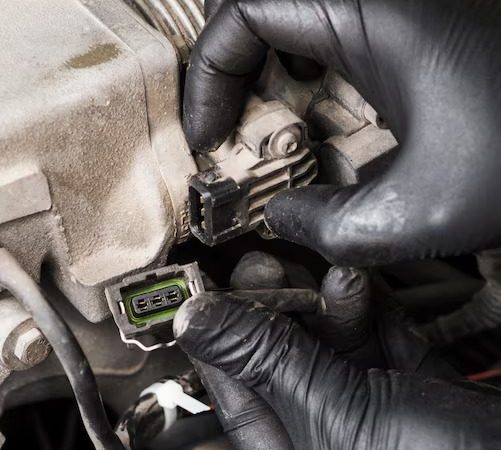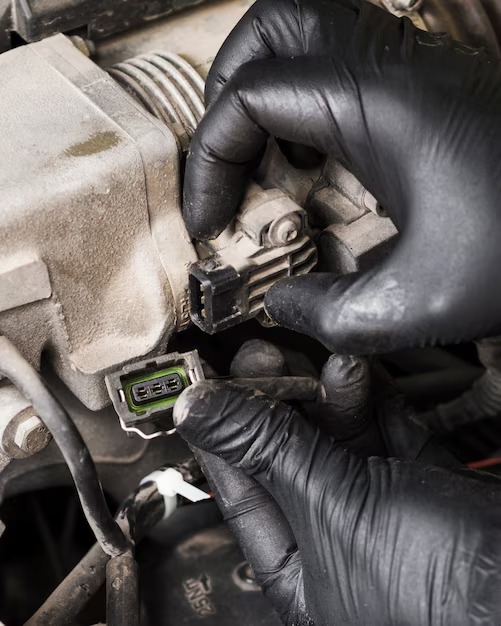Essential Guide to Checking the Instruments Cluster for Optimal Performance

Essential Guide to Checking the Instruments Cluster for Optimal Performance
Understanding the various indicators within a vehicle is crucial for ensuring a smooth and safe driving experience. These visual prompts provide essential feedback about the state of the automobile, alerts the driver to potential issues, and contributes to overall vehicle performance. Being aware of these essential signals can prevent minor inconveniences from escalating into major problems.
Adapting to modern vehicles, which often come equipped with advanced technology, can initially feel overwhelming. However, familiarizing oneself with the key symbols and gauges allows for more informed decisions while operating a vehicle. By learning how to interpret these displays correctly, drivers can enhance their awareness and confidence on the road.
Mastering these vital aspects not only leads to better maintenance but also ensures a more enjoyable journey. A proactive approach to understanding displays can save time, money, and potentially hazardous situations. In this article, we will explore the various types of automotive notifications, assisting you in navigating and interpreting them effectively.
Understanding Your Dashboard Lights
The illumination on your vehicle’s control panel offers vital insights into its operational status. These indicators serve as a means to convey critical information, alerting you to anything that requires attention. Understanding what each light signifies is key to maintaining safety and performance.
| Indicator Light | Meaning |
|---|---|
| Engine Warning | Indicates a potential issue with the engine or emission control system. |
| Oil Pressure | Signals low oil pressure, which could risk engine damage. |
| Battery Charge | Notifies about issues with the electrical system, such as a failing battery. |
| Brake Warning | Alerts to brake system malfunction or if the parking brake is engaged. |
| Tire Pressure | Indicates that one or more tires may be under-inflated. |
| ABS Warning | Signals a problem with the anti-lock braking system. |
| Coolant Temperature | Warns that the engine is overheating and needs immediate attention. |
Familiarizing yourself with these indicators empowers you to make informed decisions and take prompt action, thereby ensuring the longevity of your vehicle and enhancing road safety.
Key Gauges Every Driver Should Know
Understanding the primary indicators on your dashboard is crucial for maintaining the performance and safety of your vehicle. These displays provide vital information regarding operational conditions, helping you make informed decisions while driving.
Speedometer
The speedometer is a fundamental gauge that indicates how fast your vehicle is traveling. It allows you to monitor your speed, ensuring compliance with traffic laws and maintaining safe driving practices. Consistently checking this reading can aid in avoiding speeding fines and enhance overall road safety.
Tachometer
The tachometer measures engine RPM (revolutions per minute), providing insight into the engine’s performance. This gauge helps you understand when to shift gears, especially in manual transmissions, preventing engine strain. Monitoring RPM can also improve fuel efficiency and extend the life of your engine.
How to Interpret Warning Signals
Understanding the alerts presented by your vehicle is crucial for maintaining its optimal performance and ensuring safety on the road. These indicators serve as a communication channel, providing essential information about the various systems in the automobile. Properly deciphering these signals can prevent minor issues from escalating into significant problems.
When a warning light appears, it’s important to recognize its meaning. Many warnings are color-coded: red typically signifies a serious issue that requires immediate attention, while yellow or orange indicates a cautionary situation that should not be ignored, but may not demand immediate action.
Each symbol has its unique significance, representing different components such as the engine, brakes, or oil pressure. Familiarizing yourself with these icons can enhance your ability to respond appropriately. Always consult the vehicle’s manual for specific information regarding the interpretation of each alert to ensure accurate comprehension.
When an indicator activates, assess the condition of the vehicle and determine if it is safe to continue driving. If there’s any uncertainty about the signal or its implications, it’s advisable to consult a professional mechanic for a thorough inspection. Proactive engagement with these alerts not only extends the life of the vehicle but also significantly contributes to overall road safety.
Regular Instrument Checks for Safety
Maintaining a consistent routine for verifying vehicle dashboard indicators is crucial for ensuring a secure driving experience. Proper monitoring of these displays can help identify potential issues before they escalate, significantly reducing the risk of accidents or breakdowns. This proactive approach not only enhances vehicle longevity but also fosters confidence behind the wheel.
Frequency of inspections plays a vital role in promoting safety. It is advisable to conduct evaluations on a regular basis, ideally aligning them with other maintenance tasks. By doing so, drivers can stay informed about their vehicle’s condition and make timely adjustments as necessary.
Another important aspect is the interpretation of warning signals. Understanding what various alerts signify will empower operators to take appropriate actions. When a warning light activates, it should not be ignored, as ignoring these indicators can lead to severe complications. Quick responses to these signals can prevent minor issues from transforming into major repairs.
In addition, environmental factors may affect instrument performance. Variations in weather conditions, for instance, can influence the accuracy of readings. Seasonal checks can help ensure that all displays respond correctly and provide reliable information under different circumstances.
Finally, keeping the dashboard clean and unobstructed fosters better visibility of the indicators. Dirt or obstructions can hinder the ability to notice critical warnings promptly. Regular cleaning and maintenance of the instrument panel contribute to safer driving by ensuring that all alerts are easily visible and interpretable.
Diagnosing Common Instrument Issues
Understanding the functionality of vehicle indicators is crucial for effective maintenance and operation. Issues can arise unexpectedly and may lead to uncertainty regarding the overall performance of the automotive system. Identifying these problems early can help in ensuring both safety and reliability on the road.
One prevalent issue is the malfunctioning of the speedometer. A needle that sticks or gives inconsistent readings may suggest a problem with the cables or sensors. It is advisable to examine the connections and, if necessary, consult a technician for repairs.
The fuel gauge is another component frequently prone to error. A gauge that shows fluctuations despite a constant fuel level might indicate a faulty sending unit or electrical issues. Monitoring the gauge regularly can help pinpoint when discrepancies begin to occur.
The warning lights on the dashboard serve as critical alerts. When a light remains illuminated without a clear reason, it may signify underlying problems, such as engine troubles or battery issues. Investigating these warnings promptly can prevent further complications.
Temperature gauges also require attention, as they provide vital information about the engine’s heat levels. A rising needle could indicate overheating, necessitating immediate action to avoid engine damage. Regular checks during operation can assist in recognizing abnormal behavior.
Positioning of the tachometer might skew your perception of engine performance. If the needle fluctuates unexpectedly, it could signal issues within the ignition or fuel systems. Observing the readings during various driving conditions can help in diagnosing the root cause.
In summary, familiarizing oneself with these common issues enables proactive problem-solving and enhances the overall driving experience. Regular observation and maintenance of these components can not only identify potential problems but also extend the lifespan of the vehicle.
When to Seek Professional Help
Understanding the indicators and signals from your vehicle is crucial for maintaining its performance and safety. However, there are scenarios where specialized knowledge and experience are required to address issues properly. Recognizing these moments can save time, money, and discomfort on the road.
Signs That Indicate Professional Intervention
- Persistent warning lights on the dashboard that do not turn off, even after troubleshooting.
- Unusual sounds or vibrations that appear suddenly and differ from the typical operation of the vehicle.
- Fluid leaks on the ground beneath the vehicle, which could indicate serious mechanical problems.
- Significant drops in performance, such as difficulty accelerating or maintaining speed.
- Unresponsive or malfunctioning electronic features that impair driving safety.
When to Consult an Expert
If you encounter any of the above signs, it’s imperative to consult with a qualified technician. Additionally, if you are unsure about the condition of your vehicle or lack the necessary tools to diagnose an issue, seeking assistance from a professional is advisable.
- Regular maintenance checks based on the manufacturer’s schedule.
- Preparation for long trips, ensuring reliability and safety.
- Any noticeable changes in fuel efficiency that are not consistent with normal operation.
Q&A: Checking the instruments by car
What is the normal engine temperature range for most vehicles?
The normal engine temperature range for most vehicles is typically between 195°F and 220°F (90°C to 105°C). Staying within this range ensures optimal performance and prevents overheating.
How can I monitor my engine temperature while driving?
You can monitor your engine temperature by checking the temperature gauge on your dashboard. This gauge usually has a dial that indicates the current engine temperature, helping you identify any potential issues.
What should I do if the engine temperature dial shows a warning signal?
If the engine temperature dial shows a warning signal, it’s crucial to pull over safely and turn off the engine. Allow it to cool down before checking the coolant levels or seeking professional assistance.
How does the engine temperature affect vehicle performance?
The engine temperature plays a significant role in vehicle performance. If the engine runs too cold or too hot, it can lead to reduced efficiency, increased emissions, and potential damage to engine components.
What are the signs of overheating related to engine temperature?
Signs of overheating related to engine temperature include a rising temperature dial, steam coming from under the hood, and unusual smells. If you notice these signs, it’s important to address the issue immediately.
Why is it important to maintain proper engine temperature?
Maintaining proper engine temperature is essential for optimal combustion, fuel efficiency, and longevity of engine components. An engine that consistently operates outside the normal temperature range can suffer severe damage.
How can a faulty thermostat affect engine temperature?
A faulty thermostat can cause the engine temperature to fluctuate or stay too high or too low. If it fails to open or close properly, it disrupts the flow of coolant, leading to potential overheating or poor engine performance.
What role does coolant play in regulating engine temperature?
Coolant helps regulate engine temperature by absorbing heat from the engine and dissipating it through the radiator. Proper coolant levels and quality are crucial for maintaining an optimal temperature as indicated by the dial.
How often should I check my engine temperature dial?
You should check your engine temperature dial regularly, especially during long drives or in extreme weather conditions. Keeping an eye on this dial can help you catch any potential overheating issues early.
What maintenance steps can help ensure proper engine temperature?
To ensure proper engine temperature, regularly check and replace the coolant, inspect the thermostat, and ensure that the radiator is clean and functioning correctly. These steps will help keep your engine within the ideal temperature range as indicated by the dial.
When diagnosing issues with a new car, what role does the wire play in how the car works?
Wires are essential for connecting various components within the car, allowing signals to be sent and received, which is crucial for the car’s overall functionality.
What should you say that the instrument cluster indicates when you notice a problem?
If the instrument cluster shows warning lights or unusual readings, it may indicate that there is an issue with one of the six main instruments, such as the speedometer or tachometer.
How does the car usually display voltage readings for the battery-condition indicator?
The car usually displays voltage readings through the instrument cluster, often using a voltmeter or ammeter to show whether the voltage is high or too low.
What should you do if you notice dim readings on the instrument cluster end?
If you notice dim readings on the instrument cluster end, it may be necessary to check the connections behind the instrument to ensure they are secure and functioning properly.
What are some common reasons for lcd pixelation or no operation in an instrument cluster?
The reasons are many and can include faulty wiring, a defective circuit board, or issues with the unit itself, which may require a diagnostic check to determine the root cause.
How can you test all lights on your dash panel effectively?
To test all lights on your dash panel, you can use a multimeter test voltages to ensure that each bulb is receiving power and functioning correctly.
What steps should you take if the rev counter needle moves erratically?
If the rev counter needle moves erratically, it’s important to inspect for any faulty cluster components and check for any loose wires or connections that may be causing the issue.
What should you do if your car’s odometer is not displaying the total number of miles accurately?
If your car’s odometer is not displaying the total number of miles accurately, you may need to refit your cluster or contact a professional for assistance in diagnosing any defects.
How can heat and vibration affect the performance of an instrument cluster?
Heat and vibration can cause wear and tear on the components of the instrument cluster, leading to issues such as gauge values differ from expected readings or a complete failure of certain instruments.
If you want peace of mind regarding your instrument cluster’s functionality, what service can you consider?
You can consider world-class rebuild services that use the highest quality components to ensure that your unit turns back to optimal condition. If you’re interested, please contact us at 01773 535638 to get yours rebuilt.





